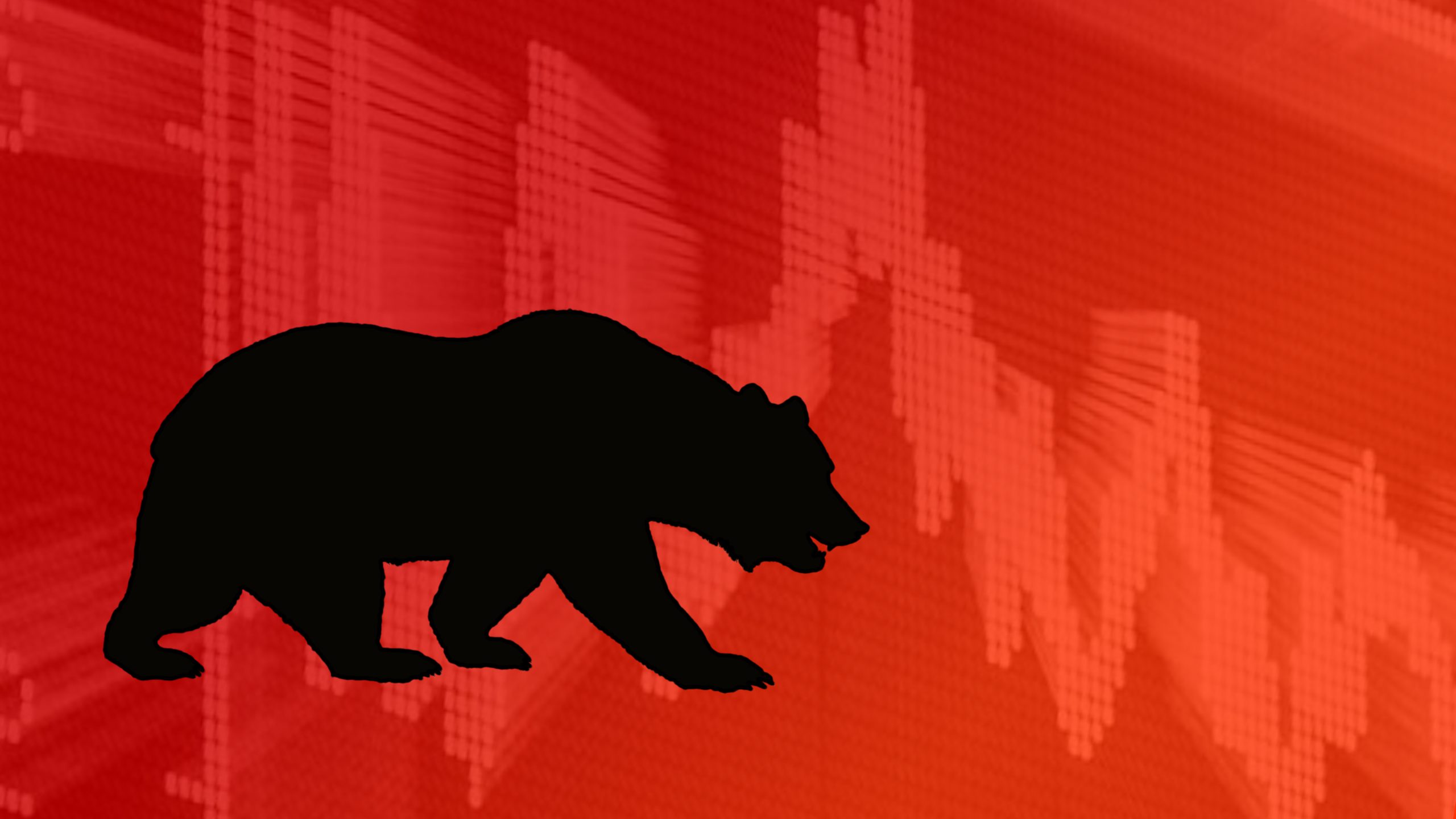
(Please enjoy this updated version of my weekly commentary from the Reitmeister Total Return newsletter).
Today we are going to talk about the elephant in the room: The Inverted Yield Curve.
Yes, the track record of this indicator to predict recessions and bear markets is formidable. And yes, this is a large part of recent market downside. However, these nasty outcomes are NOT a forgone conclusion.
This vital topic will be at the heart of this week’s Reitmeister Total Return commentary.
Market Commentary
Fears of an inverted yield curve are making headlines. And yes, it is a scary thought that all modern recessions have been foreshadowed by this event. Unfortunately, recessions and bear markets go hand in hand which explains all the investor hand wringing and gnashing of teeth.
What represents an inverted yield curve? Lots of BS articles talking about a lot of relationships that are meaningless. The true yield inversion is when the long term Treasury bond rates (10 year) are lower than short term rates (2 year).
Technically speaking this inversion first appeared on April 1st when the 2 year Treasury sprinted to 2.44% vs. only 2.39% for the 10 year. The inversion remained in place on 4/4. However, today, April 5th, the 10 year Treasury leapt ahead to 2.54% with the inversion coming off the table for the time being. (Monitor all Treasury rates on daily basis here).
Note there is great disagreement about how long the inversion needs to remain in place to truly become a recession warning. But most would agree that 2 days does not an inversion make. Unfortunately, this race is far from over with plenty of time for an extended, and meaningful, inversion to come on the scene which is why investors are on edge.
Why does a lasting inversion so often point to recession and bear market?
The interpretation of this event is that investors are predicting that the economy will contract (like a recession) in the future…and that is why rates are lower in the long run than they are in the short run.
Now the reality check…
Currently inflation is running hot and it should go lower in the future. That could make it invert now and normalize later without a recession and bear market.
More vital to this discussion, the government artificially dominates the long term bond market thanks to years of exorbitant quantitative easing (QE). This means the government has perverted the long term rates by having such outrageously high demand that it keeps rates lower than they would be if created by natural market forces.
Natural market forces = When the Fed buys NO bonds which is the historical norm
The point being is that I don’t actually believe the yield curve inverted because of fears of a looming recession. It inverted for the 2 benign reasons noted above.
I am not the only one with this view. Here is a recent clip from PIMCO fund manager Erin Browne:
"There's reason to believe that this time around, yield curve inversion may not be as good of an indicator as it has been in the past, particularly given the enormous amount of quantitative easing undertaken by global central banks."
Let’s remember that PIMCO is a dominant player in the bond market. So when they speak on the subject…it’s good to listen.
That is where I stand now. But here comes the sad truth…a recession could indeed be in our future.
That’s because high inflation has been a precursor to that many times in the past. Also sadly true that the Fed historically has overreacted to these situations by removing too much accommodation thus harming the economy. Therefore, it is wise to not just blindly ignore what is going on at this pivotal time.
So even though I like the odds that this inversion is not real for the reasons given…I am still on vigilant lookout for any economic indicators that point to looming recession and correlated bear market. Because if I did see increasing odds of that happening then I would flip the script on our portfolio given that the average bear market comes with a 34% decline from peak to value.
Step 1 = sell ALL stocks (cuz even the best of them will still go down…maybe just less than average)
Step 2 = Buy inverse ETFs to profit from declining stock prices.
Step 3 = Buy bonds a month or two later (as a recession takes hold the Fed will begin to lower rates and bond values go up)
Step 4 = Take profits on inverse ETFs and start bottom fishing because when the bounce comes it will catch most by surprise. Better to be a notch too early than a notch too late.
Let’s not get ahead of ourselves. The above steps are what we will do “if and when” signs point to much greater likelihood of recession and bear market.
Now let’s review the signs from the recent slate of key economic reports to see what they tell us:
Both the ADP and Government employment reports from last week showed impressive job gains north of 400,000. Note that anything above 150,000 jobs added a month should equate to a lowering of the unemployment rate.
Indeed, that did go lower this time around to 3.6% from 3.8%. This means we are nearly back to the same robust employment levels as seen pre-Covid.
Then on Friday we got served up a healthy 57.1 reading for ISM Manufacturing. Most impressive of which is the improving employment reading which bodes well for future hiring. However, if there is a point of concern it would be the 53.8 showing for New Orders.
Yes, anything above 50 points to future expansion. But that reading has spent most of the last couple years between 57 and 62.
Granted those are unsustainably high levels. Yet falling from 61.5 last month to 53.8 this month does make one pause to consider if this is the first sign of future slowing. And thus we will continue to watch the results closely going forward.
Gladly the ISM Services report this morning pointed to nothing but positives. The overall reading rose from 56.5 last month to 58.3. The Employment reading leapt from a scary 48.5 to impressive 54.0. And most importantly, the forward looking New Orders component rose from 56.1 to 60.1.
Net-net the positives far outweigh the negatives at this time which is why we have not quickly retreated back to the recent lows under 4,200.
On the other hand, with such an ample bounce taking place over the past month investors likely do not have the stomach to go much higher at this moment. And perhaps that will not take place until more people are convinced that the yield curve inversion was a false reading with the economy and corporate earnings chugging along at a healthy pace. This would be the catalyst behind the next bull rally to test the previous highs…and hopefully new highs.
This bullish outcome is still the most likely in my book. Unfortunately the bearish argument has merit. Thus, we need to continually examine the evidence and recalculate the odds of recession to chart our path forward.
For now you should expect range bound trading plus nasty volatility to be the norm until the market participants reach greater consensus on the bull vs. bear argument.
What To Do Next?
Discover my top picks for this hectic market environment.
I am referring to the 8 stocks and 6 ETFs in my Reitmeister Total Return portfolio that firmly beat the market last year. And well ahead of the market once again in 2022 while most other investors are still licking their wounds.
How is that possible?
The clue is right there in the name: Reitmeister Total Return
Meaning this service was built to find positive returns in all market environments. Not just when the bull is running full steam ahead. Heck, anyone can profit in that environment.
Yet when stocks are trending sideways, or even worse, heading lower…then you need to employ a different set of strategies to be successful.
Come discover what 40 years of investing experience can do you for you.
Plus see get access to my full portfolio of 8 hand picked stocks and 6 ETFs that are primed to excel in this unique market environment. (This includes 2 little known investments that actually profit from rising rates).
Wishing you a world of investment success!

SPY shares . Year-to-date, SPY has declined -4.74%, versus a % rise in the benchmark S&P 500 index during the same period.
About the Author: Steve Reitmeister

Steve is better known to the StockNews audience as “Reity”. Not only is he the CEO of the firm, but he also shares his 40 years of investment experience in the Reitmeister Total Return portfolio. Learn more about Reity’s background, along with links to his most recent articles and stock picks.
Bear Market Warning? The Inverted Yield Curve StockNews.com






